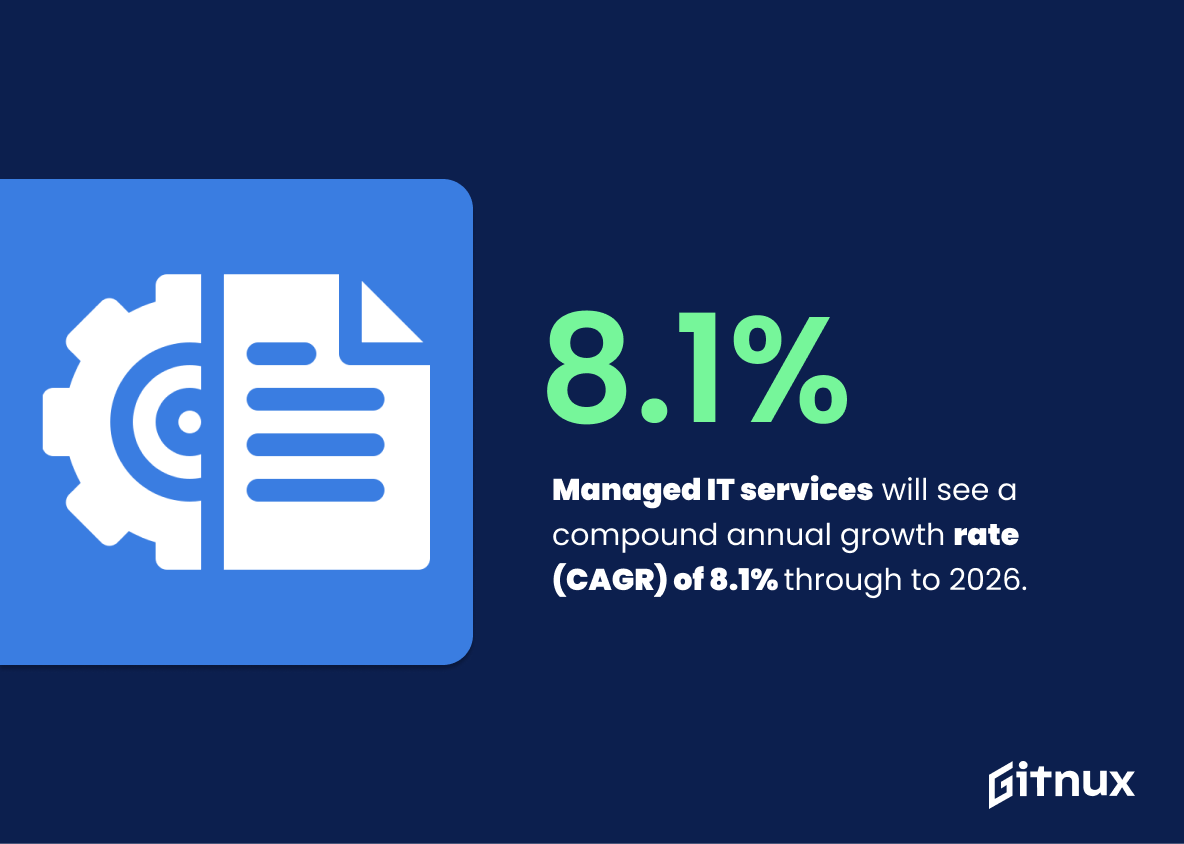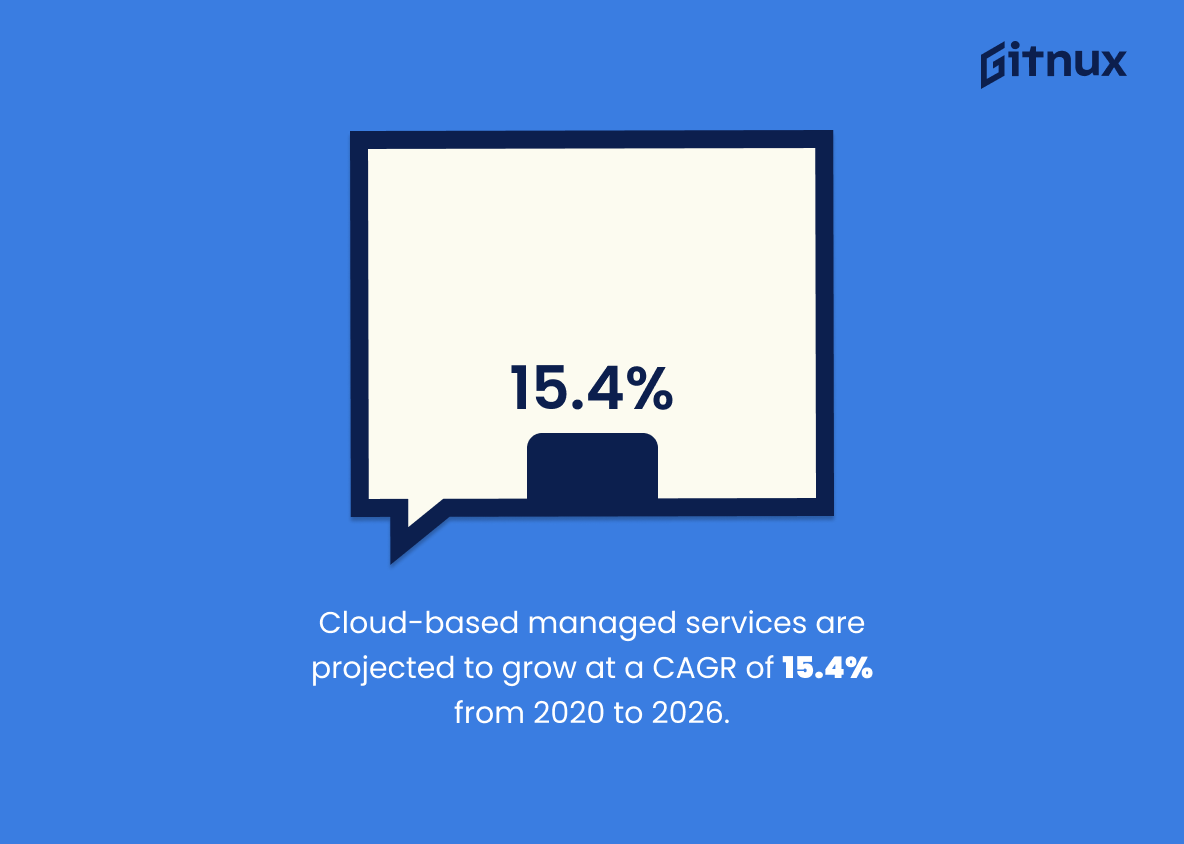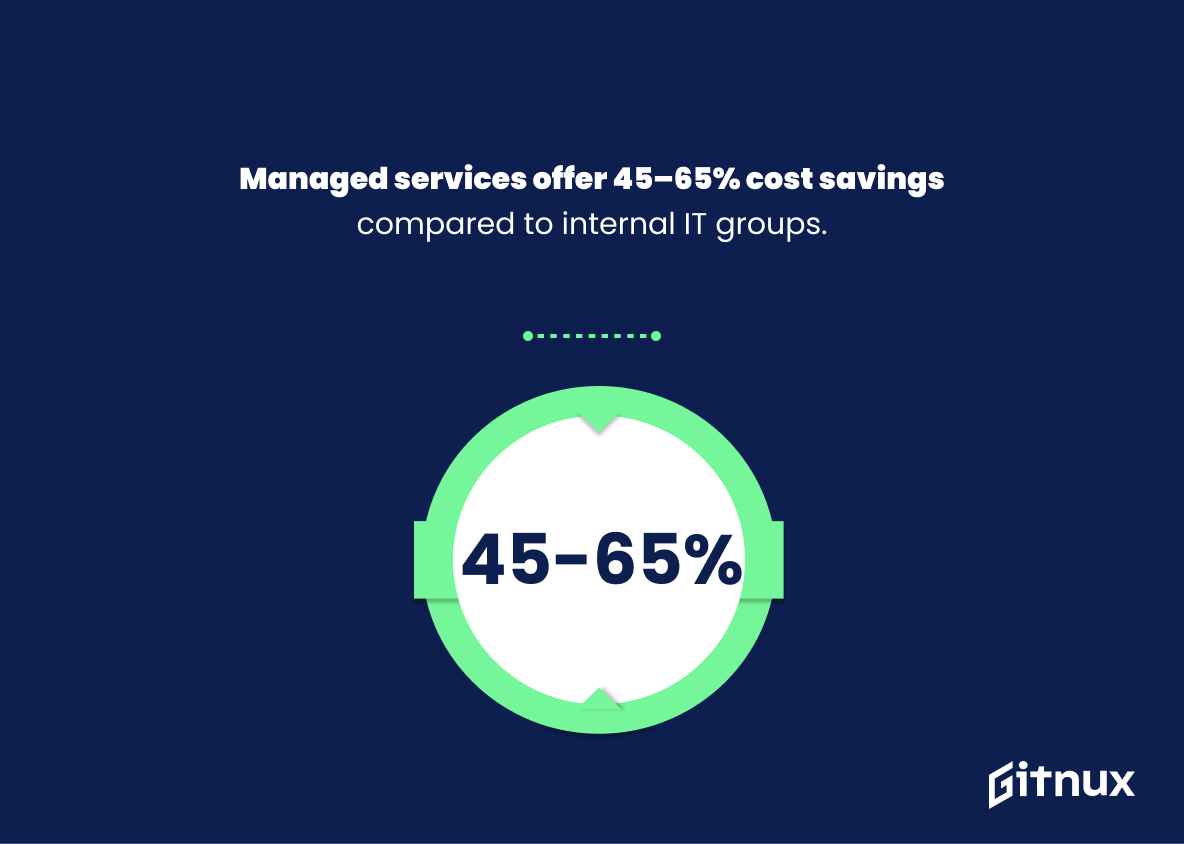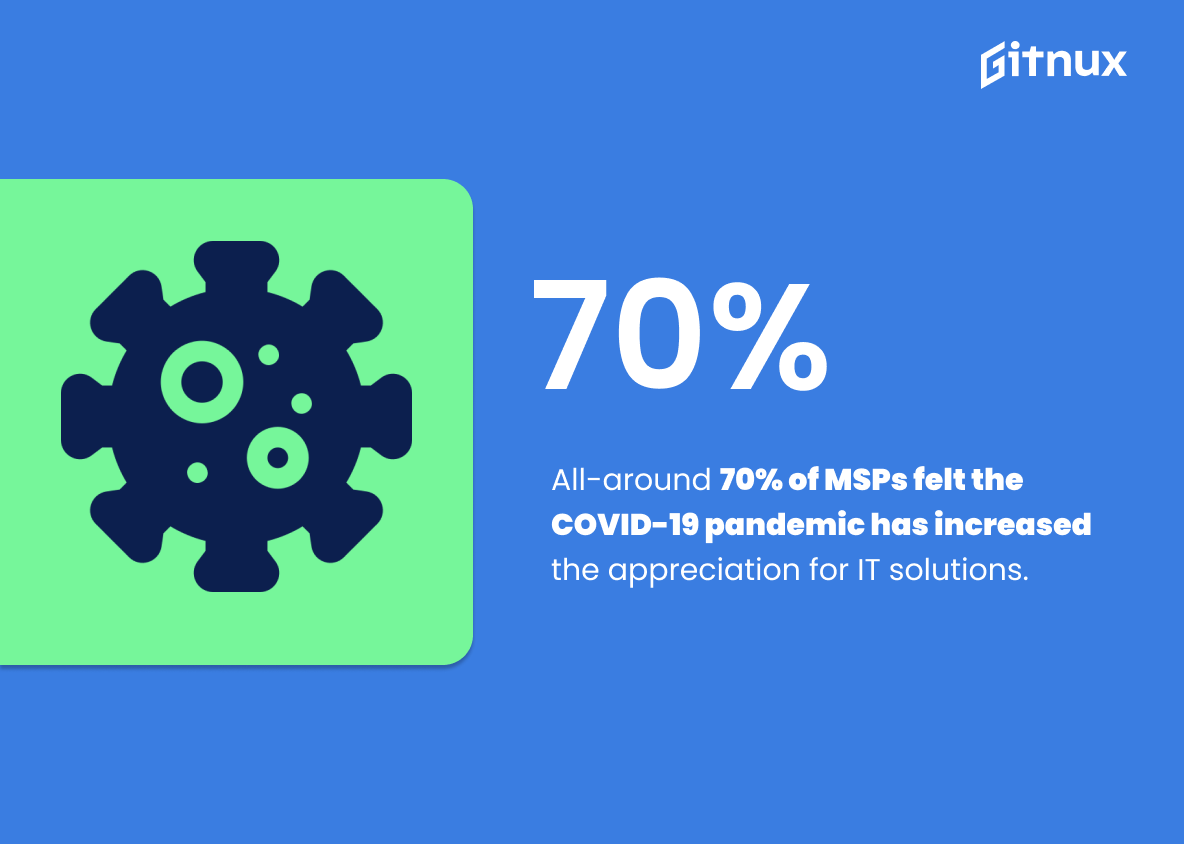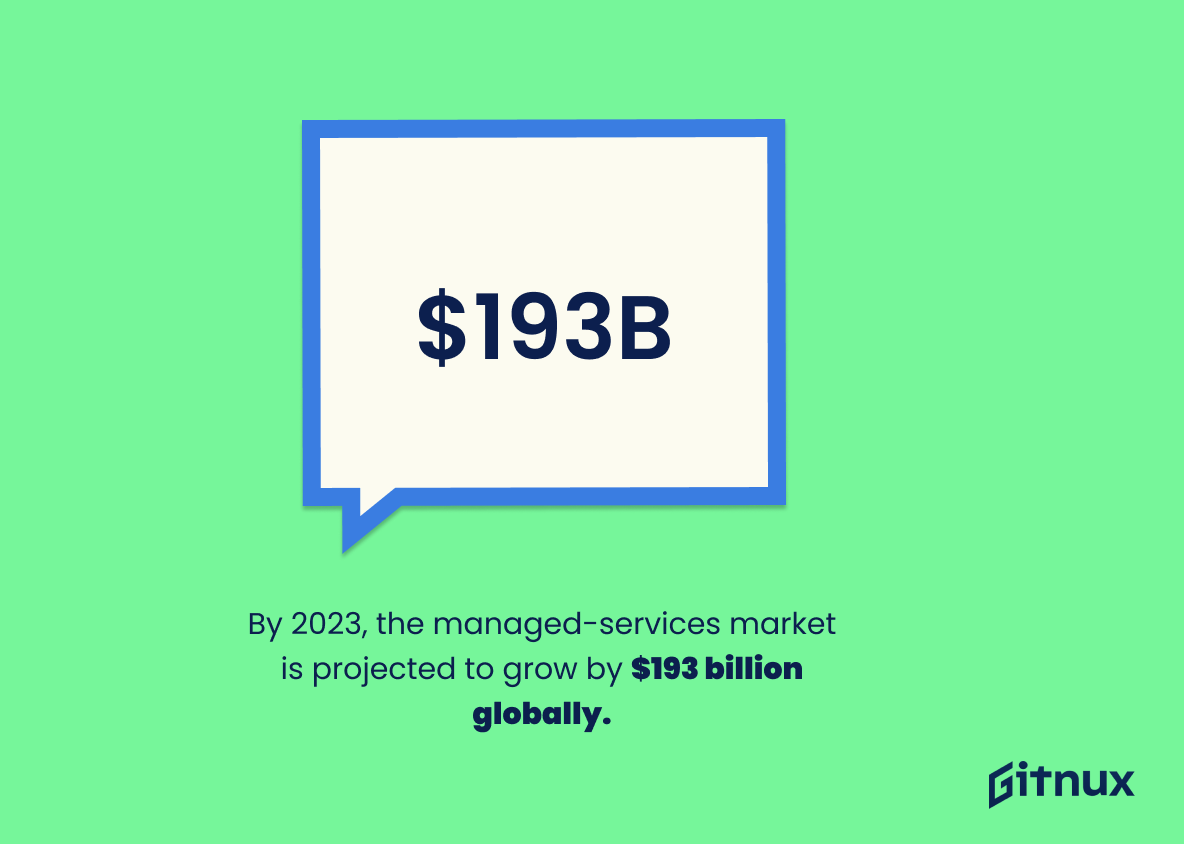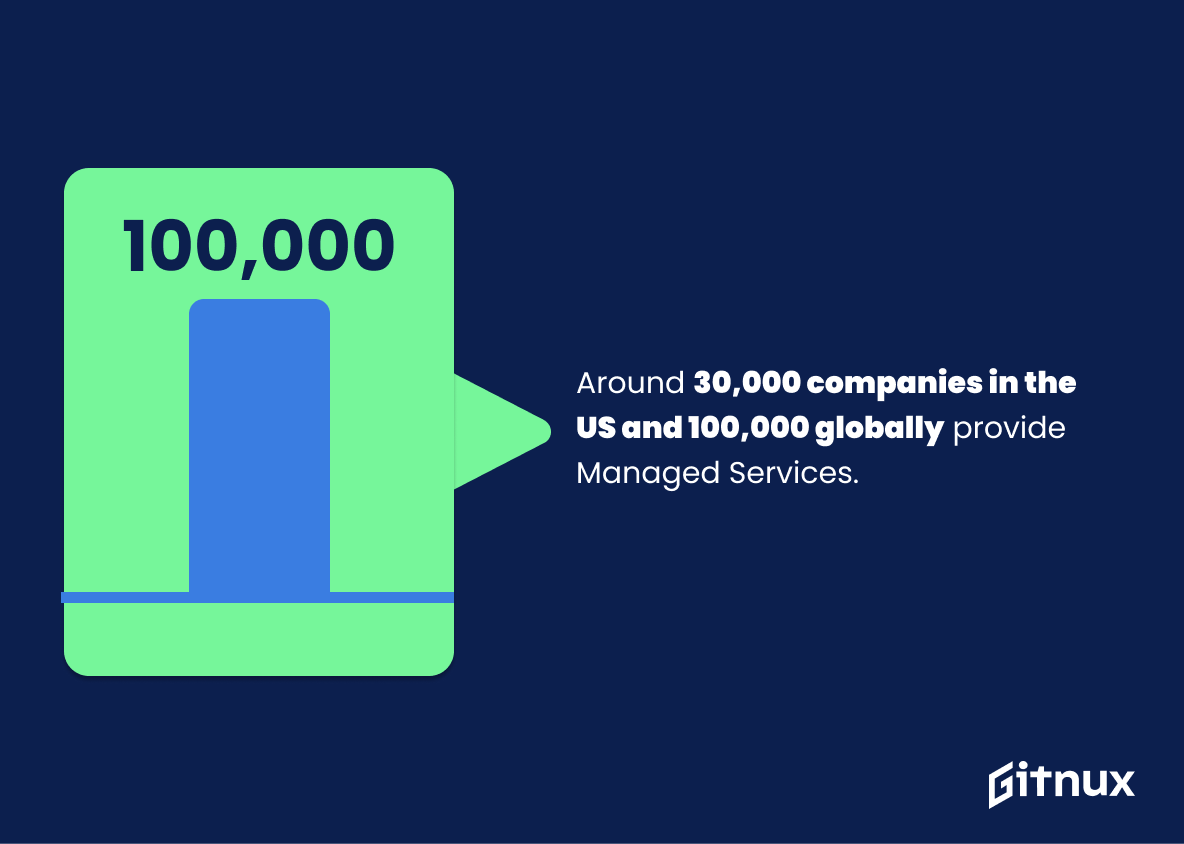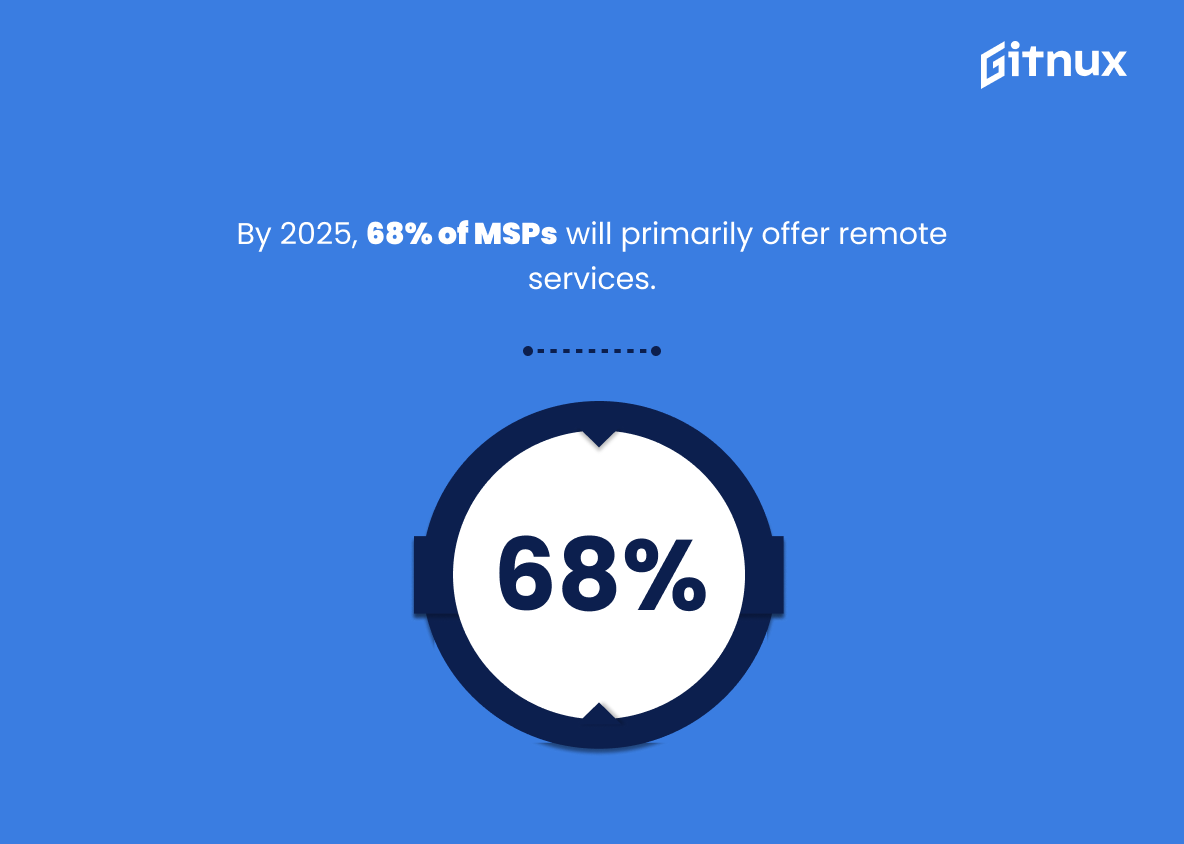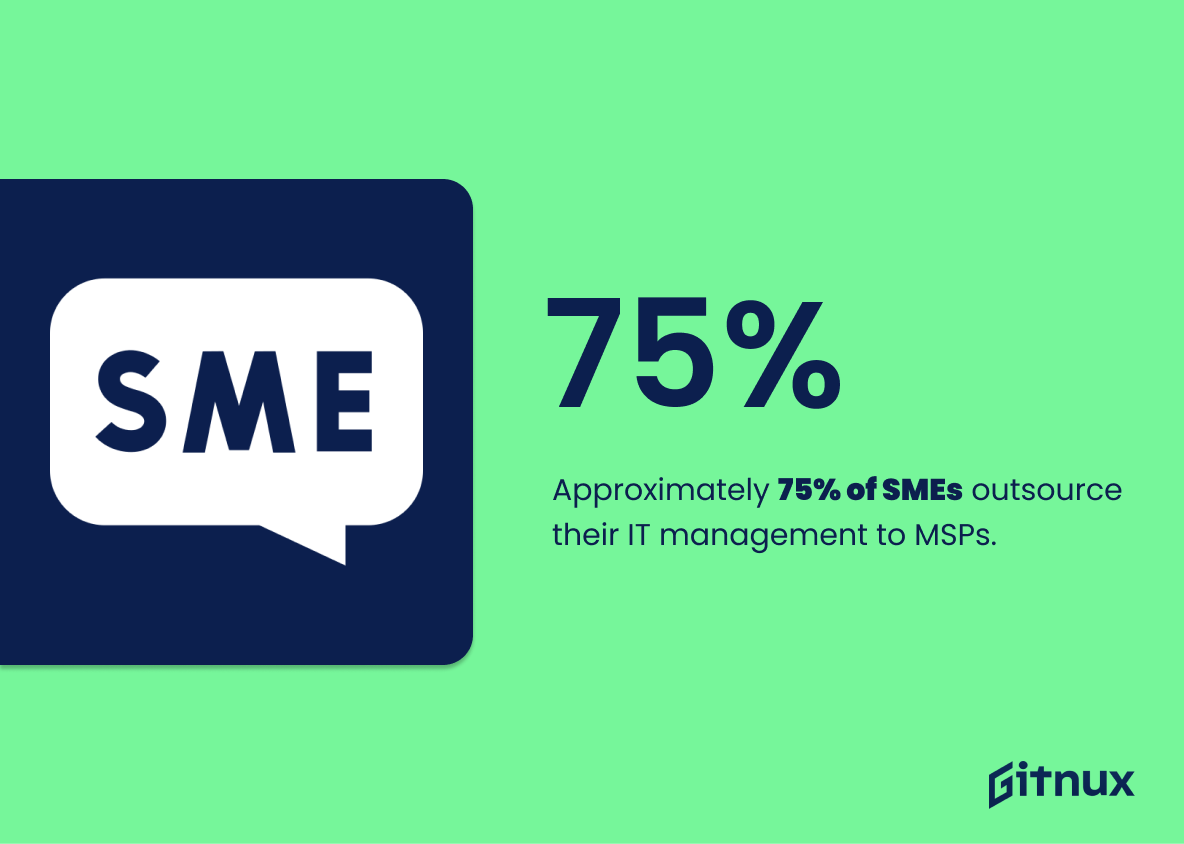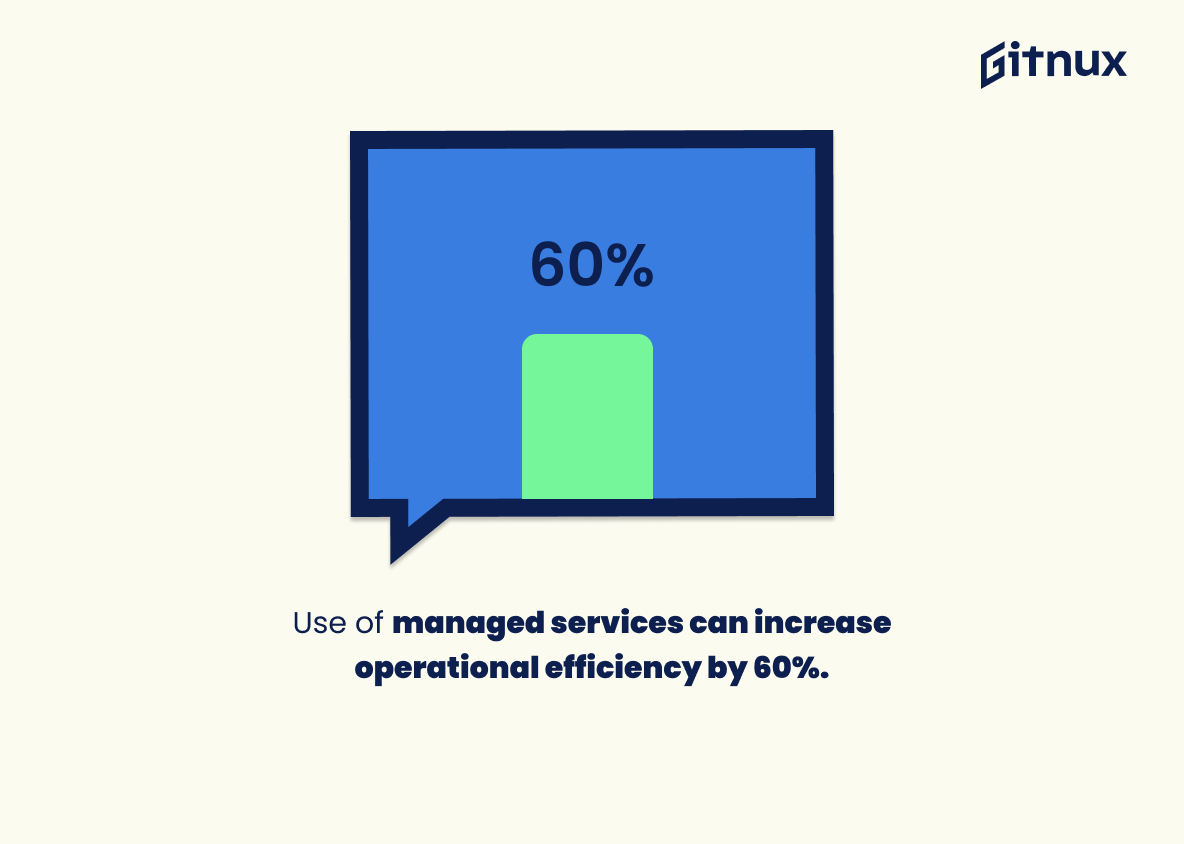In today’s highly integrated, digital, and rapidly evolving business landscape, Managed Services Providers (MSPs) have become a linchpin for seamless operations and proactive IT support. But how significant is the MSP industry really, and how does it shape the future of businesses across the globe? Unravel the story behind the figures with our in-depth dive into the world of MSP industry statistics. We’ll guide you through the metrics that matter, the trends that are driving growth, and the predictions that hint at what’s coming next. Whether you’re an MSP, a business considering MSP services, or simply interested in the digital transformation landscape, these statistics will provide useful insights into this burgeoning sector.
The Latest Msp Industry Statistics Unveiled
Managed IT services will see a compound annual growth rate (CAGR) of 8.1% through to 2026.
In the grand theater of MSP Industry Statistics, the projected 8.1% CAGR of Managed IT services until 2026 enters as a visionary superstar. It sweeps across the stage with predictions of robust growth, a compelling act not only in terms of the increasing demand for such services, but hinting at a swell of technological advancements that could reshape the industry’s landscape. It holds the crystal globe forecasting a prosperous future promising increased investment, market expansion and potential riches for those who dare to engage. Certainly, the big picture of MSP Industry statistics would be incomplete without acknowledging this powerful player. It unquestioningly assumes the leading role and shines a spotlight for those wishing to understand the industry’s dynamics and future opportunities.
Cloud based managed services is expected to grow at the highest CAGR of 15.4% from 2020 to 2026.
Projecting a thrilling trajectory for the MSP Industry, the anticipated growth rate of cloud-based managed services adds a significant punchline to our narrative. A dazzling CAGR of 15.4% through 2020 to 2026 not only signals robust growth, but also signifies the industry’s vigorous shift towards cloud technologies. In this light, the statistic sets the stage for exploring the transformative impact cloud-based services will likely imprint on the MSP landscape. It fosters a deeper understanding of the industry’s direction, magnifies the importance of embracing cloud capabilities for MSP players, and illustrates the enormous potential for investment and revenue growth in the field.
The North American region is expected to hold the largest MSP market size during the forecast period (2021-2026).
Forecasting the North American region as the dominant player in the MSP market size from 2021 to 2026 injects a compelling element into our blog post about MSP Industry Statistics. This nugget of information lays the groundwork for a focused discussion on the reasons behind North America’s stranglehold on this industry. It opens up conversations about the factors influencing this region’s growth and its impact on global MSP market trends. The forecast period also provides a helpful timeframe for readers, adding valuable context to developments in this space and enabling them to grasp the scope and speed of the market’s growth. This statistic ultimately acts as a catalyst for gauging industry dynamics, delving into regional strengths, and exploring growth strategies within MSP Industry statistics.
56% of companies have reported significant cost savings by having an MSP.
Highlighting that a substantial 56% of companies have realized significant cost savings through engaging an MSP, shines a light on the financial benefits that can be reaped within the MSP Industry. Such a statistic serves as powerful, quantitative testimony to the potential profitability of investing in MSPs. It provides compelling evidence that transforms the abstract idea of cost-saving into a more tangible, concrete concept, giving potential MSP users a strong financial incentive to consider.
Managed services offer 45–65% cost savings compared to internal IT groups.
Shedding light on the cost-efficiency of managed services, the statistic unveils a striking financial advantage. It highlights that there’s a considerable 45-65% cost reduction when businesses choose managed services over internal IT groups. This dramatic dip in expense is a magnet for businesses striving to optimize their operational efficiency and free up significant resources. As a pivotal point in the MSP industry landscape, this statistic not only underscores the economic allure of managed services but also prompts businesses to re-evaluate their IT strategies. It underpins the growing shift toward third-party managed services, marking a significant trend in the MSP industry. Thus, this stat does not simply present a point of fact, but rather, it powerfully fuels the conversation around MSP industry’s compelling value proposition.
All-around 70% of MSPs felt the COVID-19 pandemic has increased the appreciation for IT solutions.
Highlighting the statistic that approximately 70% of MSPs believe the COVID-19 pandemic has heightened the appreciation for IT solutions enriches the discussion about MSP Industry Statistics. This concrete number complements the narrative by putting a spotlight on how vital the MSP industry has become in this unprecedented era. It pushes us to re-evaluate the industry’s role and might inspire future discussions in the blog post about the potential growth of MSPs. This number could motivate decision-makers to invest more in IT solutions and could also be a benchmark for shaping future strategies in the MSP industry. It ultimately underscores the increasing value and impact of MSPs in our digital, pandemic-affected world.
By 2023, the managed-services market is projected to grow by $193 billion globally.
Envisage the pulsating heart of the managed-services sector, throbbing with enterprise, innovation, and growth potential. As we glimpse into the not-so-distant 2023, statistical projections cast a spotlight on an eye-watering advancement of $193 billion globally. This astronomical sum isn’t just a testament to the sector’s robust health. Rather, it serves as a dynamic, unrivaled testament to the industry’s transformative power, scalability and the sizzling opportunities brewing beneath the surface.
Profound, isn’t it? This projected tidal wave of growth gives businesses, consumers, and investors alike a crystal ball into the future of the managed-services market, highlighting its momentum and direction. These numbers are meant to bring conviction to the skeptics, build confidence among industry players, and assure impending entrants of the Msp industry’s lucrative landscape. So, as we stride forward in the labyrinth of managed-services, this $193 billion figure illuminates our path – a radiant beacon of assurance, optimism and promise.
67% of companies outsource at least some part of their IT infrastructure to MSPs.
Delving into the digital realm and decoding the patterns, it is fascinating to unveil that a significant 67% of companies delegate at least a fraction of their IT infrastructure to Managed Service Providers (MSPs). A noteworthy revelation that muses over the burgeoning need of MSPs in the contemporary corporate islands. This numeric magnet grips the gaze for symbolizing the pervasive reliance on MSPs, showcasing that two-thirds of the business world prefers to unburden their IT-related concerns by entrusting skilled MSPs. In the chessboard of a blog post about MSP Industry Statistics, this figure contrasts a dramatic shift towards an outsourced IT model and testifies the promising prospect and vitality of the MSP industry. Not to be neglected, it further echoes the hidden opportunities waiting to be explored under the sun of the MSP industry.
Around 30,000 companies in the US and 100,000 globally provide Managed Services.
The sheer number of companies providing Managed Services unveils a burgeoning marketplace. When juxtaposed against the canvas of approximately 30,000 companies in the U.S. and a staggering 100,000 on a global scale, this statistic enhances our understanding of the MSP Industry’s vast reach and influence. It surpasses the confines of mere number-crunching, serving instead as a crystalline lens focused on the vital ecosystem of businesses. It showcases how interwoven Managed Services are within our contemporary, digital-first business landscape, illustrating the sector’s significance and increasing demand. This navigational star on the MSP industry’s map not only informs strategies and decision-making processes but also reinforces the trend of businesses investing heavily in subcontracted IT support. In essence, it’s a testament to the exponential growth and scale of global opportunities within the MSP industry.
It is expected that by 2025, 68% of MSPs will mainly provide their services remotely.
Forecasting an industry trend towards remote service provision, this statistic paints a progressive picture for the MSP industry in 2025. It suggests a digital pivot, with over two-thirds of Managed Services Providers adapting their strategies towards remote offerings. Such a significant shift underscores their responsiveness to evolving customer demands, technological advancements, and possibly, changing work patterns influenced by events like the Covid-19 pandemic. In the context of an MSP industry statistics blog post, this insight serves as a beacon, steering readers towards the future landscape of this industry.
Approximately 75% of SMEs outsource their IT management to MSPs.
With an impressive percentage of approximately 75% of SMEs engaging MSPs to manage their IT needs, this statistic paints an informative panorama of the MSP industry landscape. It suggests the weight MSPs carry in supporting smaller businesses’ technology requirements, unraveling their widespread recognition as trusted partners in the intricate world of IT. As we navigate through MSP industry statistics, this metric offers a compelling angle about the intrinsic bond between SMEs and MSPs, emphasizing how MSPs have metamorphosed into critical cogs in the SME business machinery. It is a pivot point around which our understanding of the market dynamics in the MSP industry can revolve, providing a numerical narrative to industry trends, growth potential, and a firm indication of the future trajectory of MSP services.
Use of managed services can increase operational efficiency by 60%.
Unfurling the banner of operational efficiency, it becomes clear just how the statistic – a noteworthy 60% boost in efficiency via managed services – can propel the MSP industry into greater heights. This comes to light more vividly in a post exploring MSP industry statistics, primarily because it nails the value proposition of managed services.
By highlighting such a significant leap in operational efficiency, it illuminates potential growth, profitability, and competitive advantages for companies that embrace this service model. In essence, that 60% isn’t just a number – it’s a beacon for transformation, a pathway to breakthrough performance within the industry. This statistic stands as an advocate for managed services, solidifying its critical place within a blog post about MSP industry statistics.
91% of MSPs anticipate that their cybersecurity revenue will increase over the next year.
In the bustling universe of MSP industry statistics, the prediction that 91% of MSPs foresee an escalation in their cybersecurity revenue in the upcoming year is a compelling constellation. This crystallizes the evolving narrative of a digital-era industry on the skyrocketing trajectory of growth and increased demand for cybersecurity services. A deeper exploration of this statistic throws ample light on profitability trends and potential investment opportunities. The forecasted surge not only underscores the vitality of cybersecurity in the current MSP landscape but also provides a mirror reflecting the industry’s heightened responsibility towards ensuring digital safety. Indeed, this holds profound implications for strategies, service portfolios, and partnerships within the MSP ecosystem.
Conclusion
In this rapidly evolving digital age, the MSP industry is becoming not just popular, but necessary for the efficient operation of businesses worldwide. The statistics reveal a high demand for managed services, pointing to an industry that’s growing tremendously in revenue, scope, and innovation. Companies are investing more in managed services to optimize their IT systems, improve their cybersecurity measures, and allow their businesses to scale. However, the MSP landscape isn’t free from challenges, with issues such as cybersecurity threats demanding even more from providers. Nevertheless, understanding this wealth of MSP industry statistics is crucial in charting a plan for the future and keeping up with the pace in this fast-growing industry. It will guide those operating in the MSP industry and those planning to leverage these services in their quest for smooth IT operations. Engaging with data trends also helps make well-informed decisions, develop beneficial contractual agreements and build efficient, secure, and scalable IT infrastructures. As the industry evolves, being informed is the key to staying ahead. So, keep an eye on the numbers and watch the managed services sector grow.
References
0. – https://www.www.crn.com
1. – https://www.getnerdio.com
2. – https://www.www.marketsandmarkets.com
3. – https://www.www.itproportal.com
4. – https://www.www.solarwindsmsp.com
5. – https://www.www.advantage.co.nz
6. – https://www.blog.hubspot.com
7. – https://www.www.arnnet.com.au
8. – https://www.www.connectwise.com
9. – https://www.www.kaseya.com
10. – https://www.www.technologymagazine.com
11. – https://www.www.alliedmarketresearch.com
12. – https://www.www.channelpro.co.uk
